

Temple
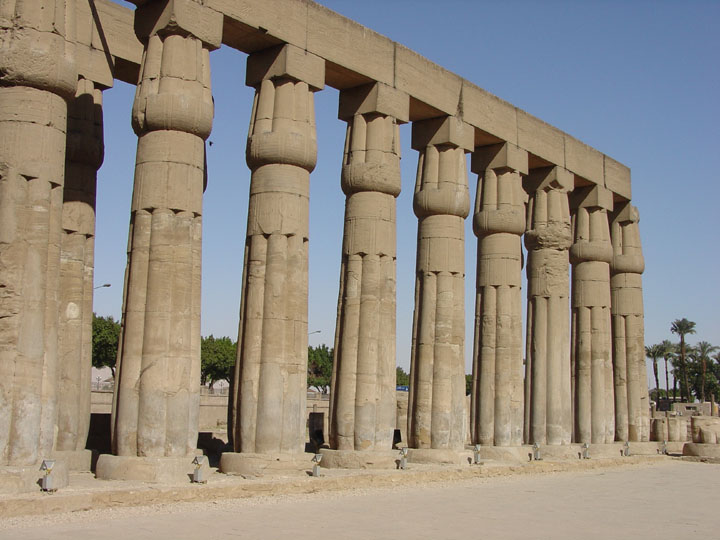
Luxor Temple
On the east bank of the Nile at Luxor lies the magnificent Luxor Temple which was dedicated to the great god Amun-Re, his wife Mut and their son Khonsu - together representing the Theban triad.
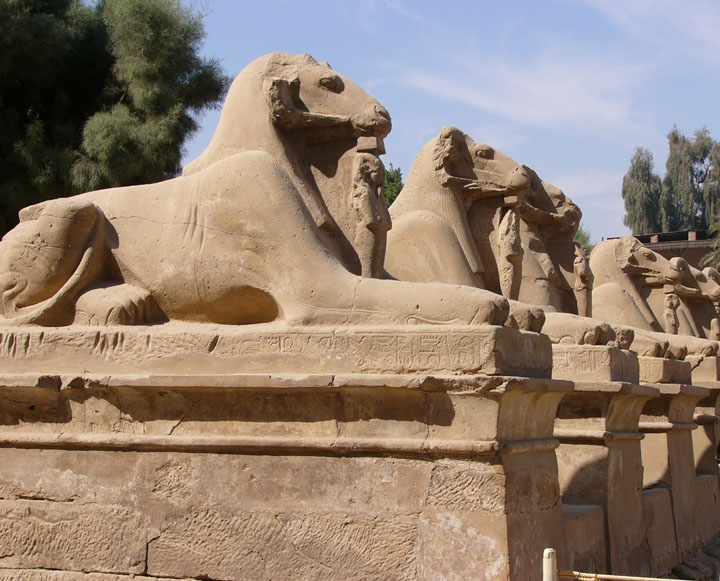
Avenue of the Sphinx
More Photos of the Sphinx Avenue
Unusually, the temple does not face the river, but its main axis faces Karnak with the remains of an avenue of sphinxes pointing to the processional way.
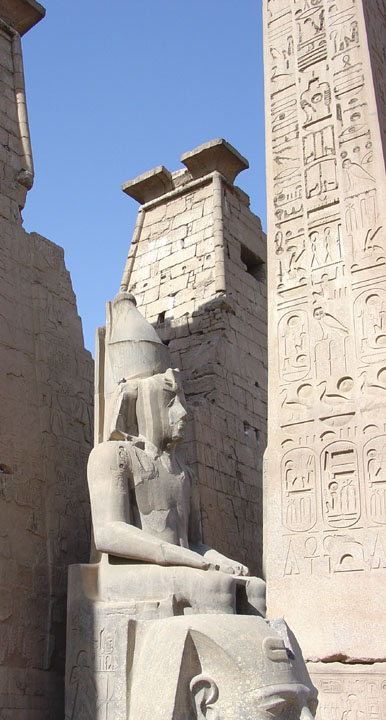
The temple was built on the site of a probable smaller Middle Kingdom structure
for the god Amun, while the earliest parts of the temple seen today date from
the 14th century BC and the time of Amenhotep III.

obelisk
Ramesses II of the 19th Dynasty oversaw the addition of a new entrance pylon (decorated with scenes of his military battles and the famous Ďbattle poemí) a court at the northeast end of the complex, two obelisks in front of the templeís pylon and six granite statues of himself (only three remain today) In the 1830's, the western obelisk was given to France and erected at Place de la Concorde in Paris where it still stands today.
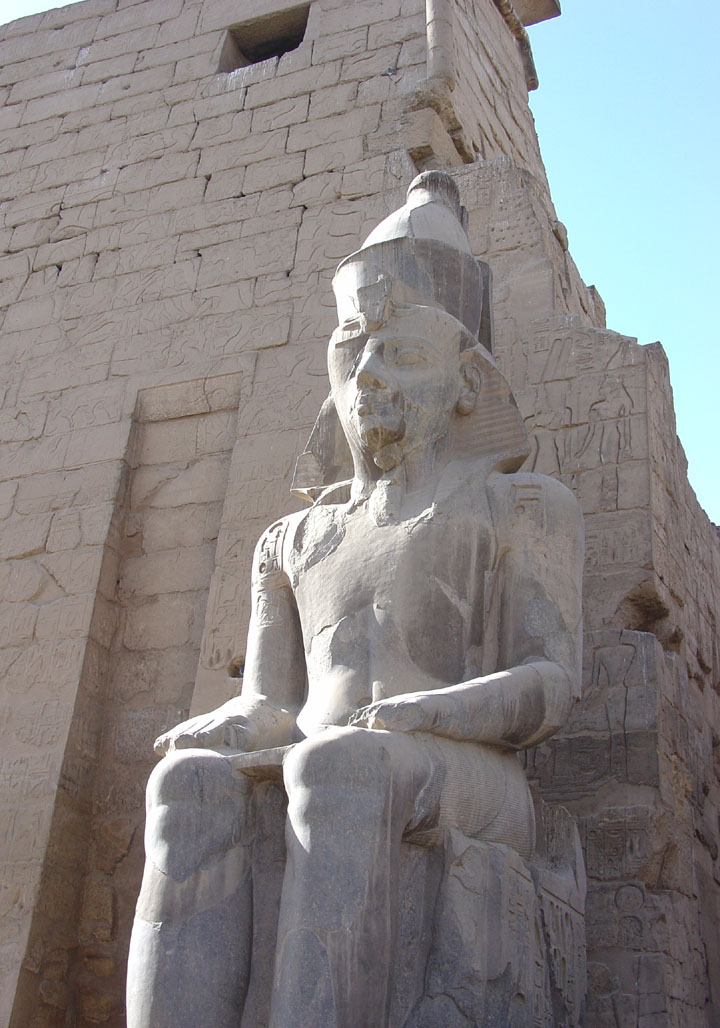
Ramesses II
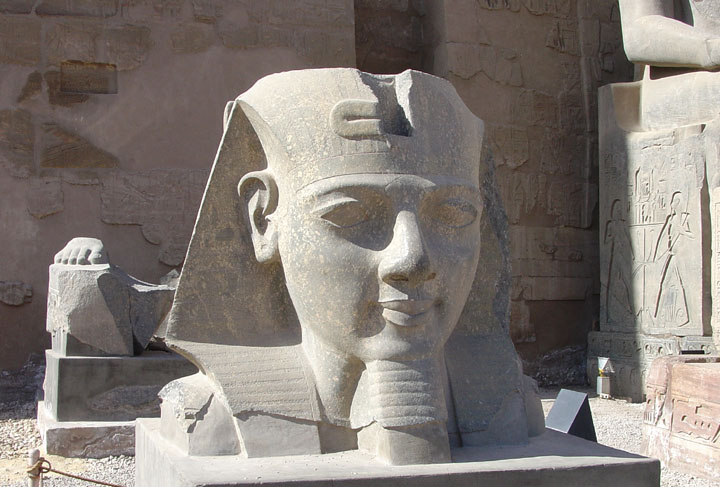
Passing through the pylon entrance, the visitor enters the court of Ramesses II
with numerous statues of the pharaoh .
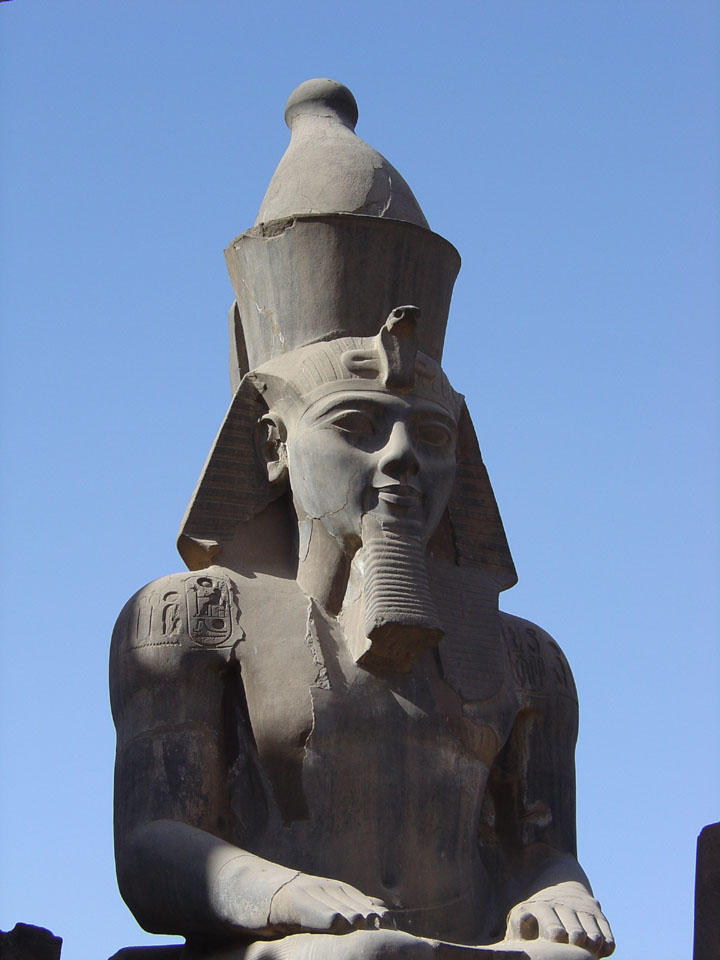
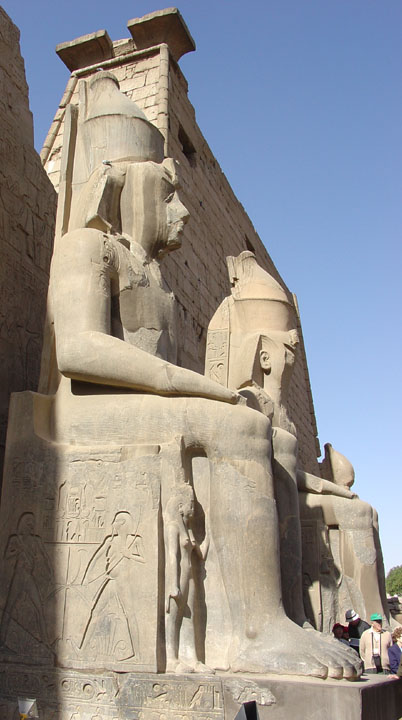

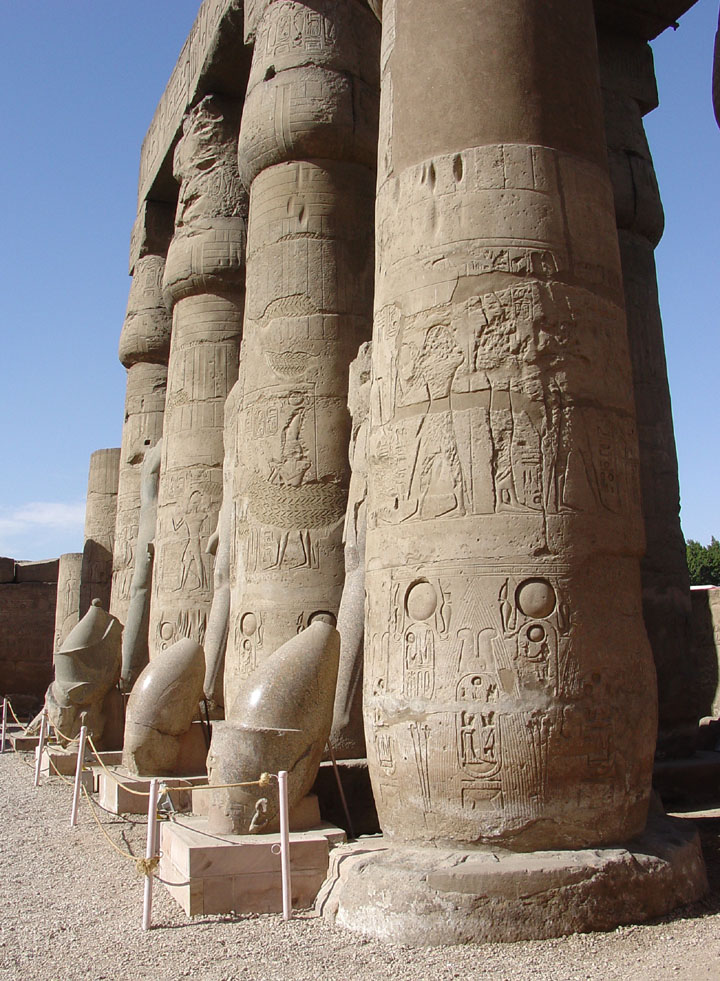
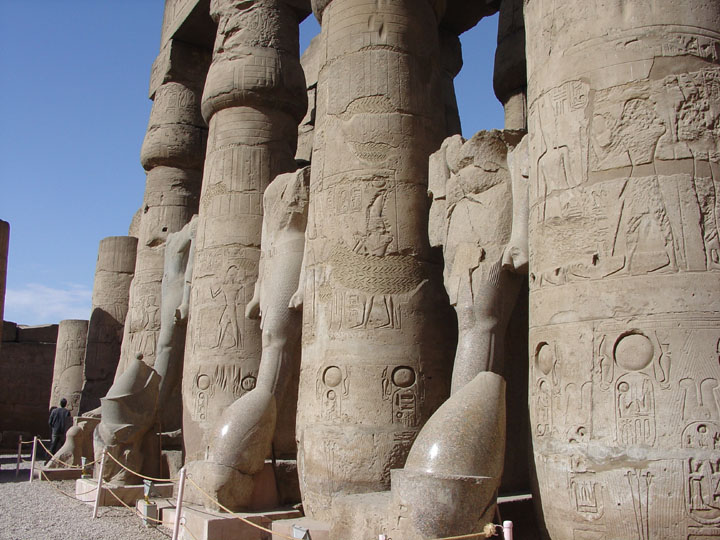
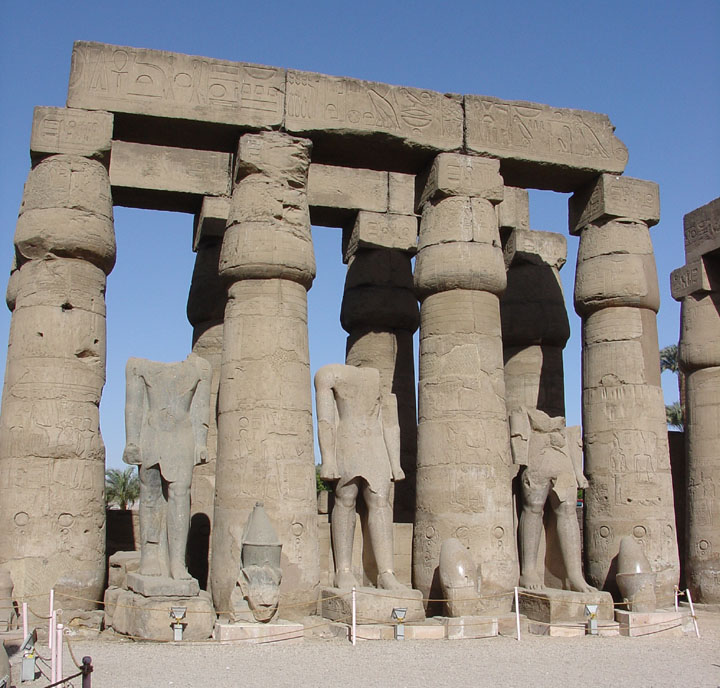


Mosque of Abuíl Hagag
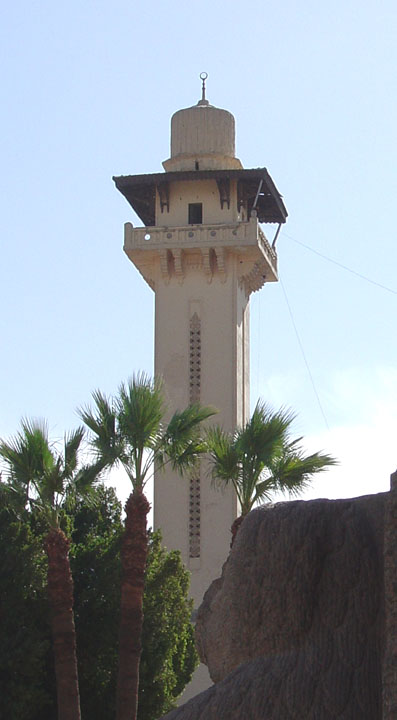
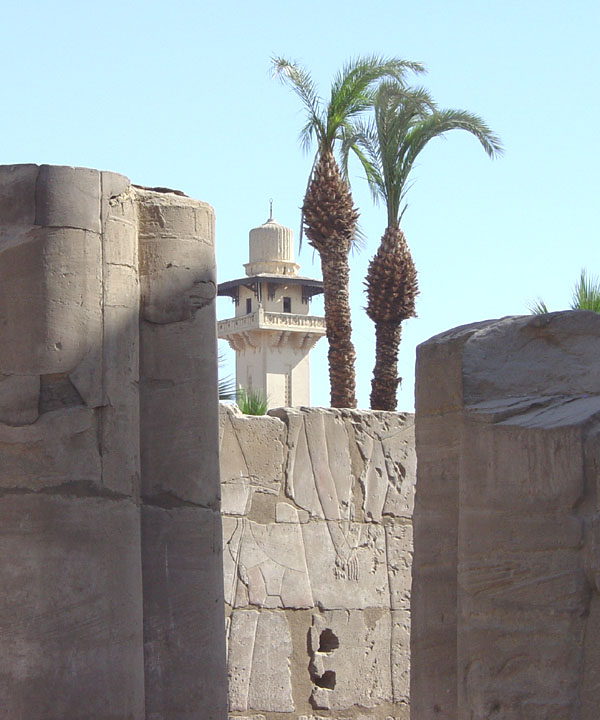
A Christian basilica was built in the northeastern corner of the temple and later a mosque dedicated to the Muslim saint Abuíl Hagag was built over the site.
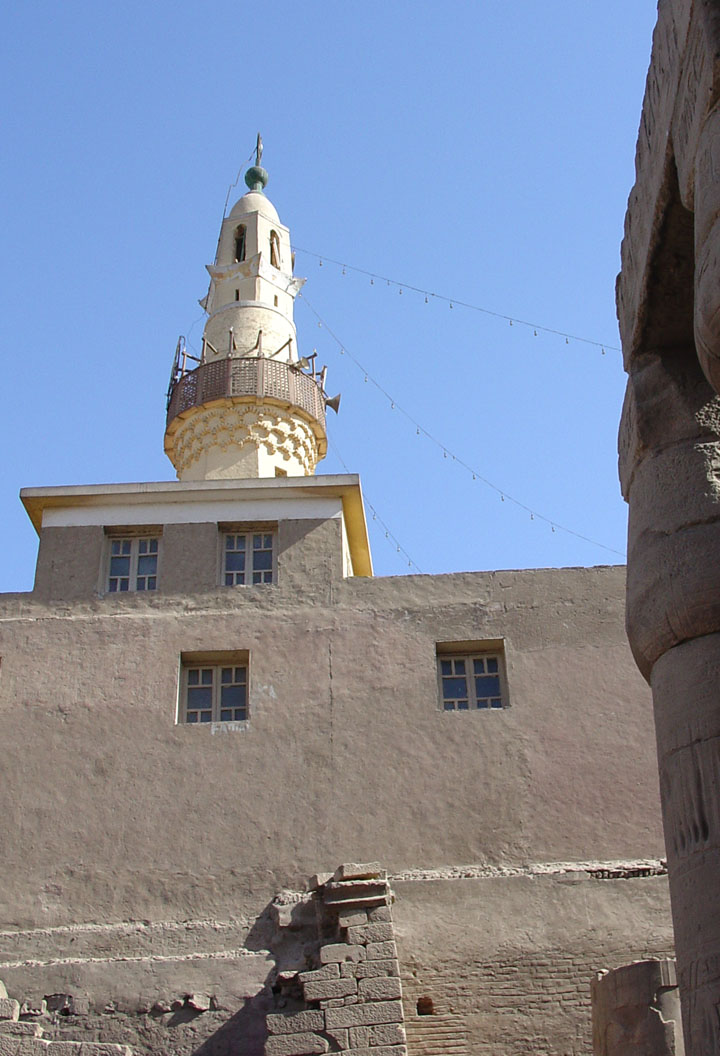
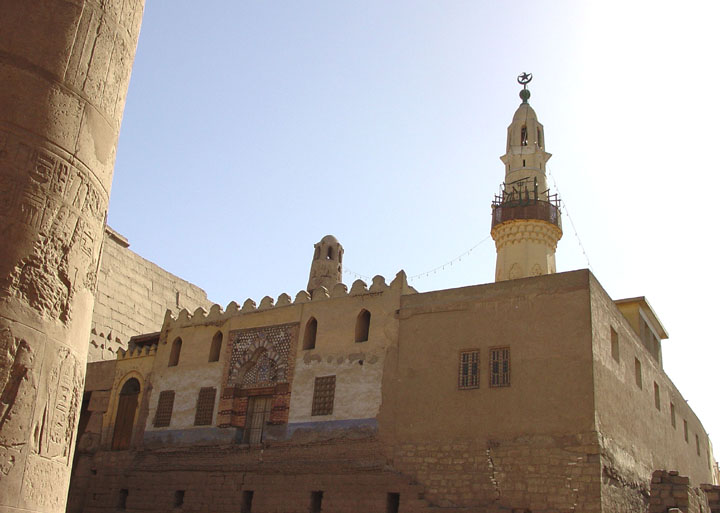
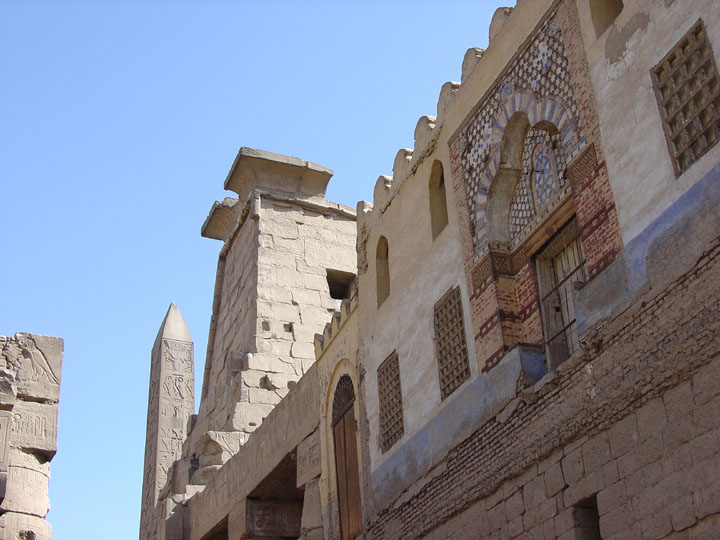
after excavation the front door of the mosque is not accessible
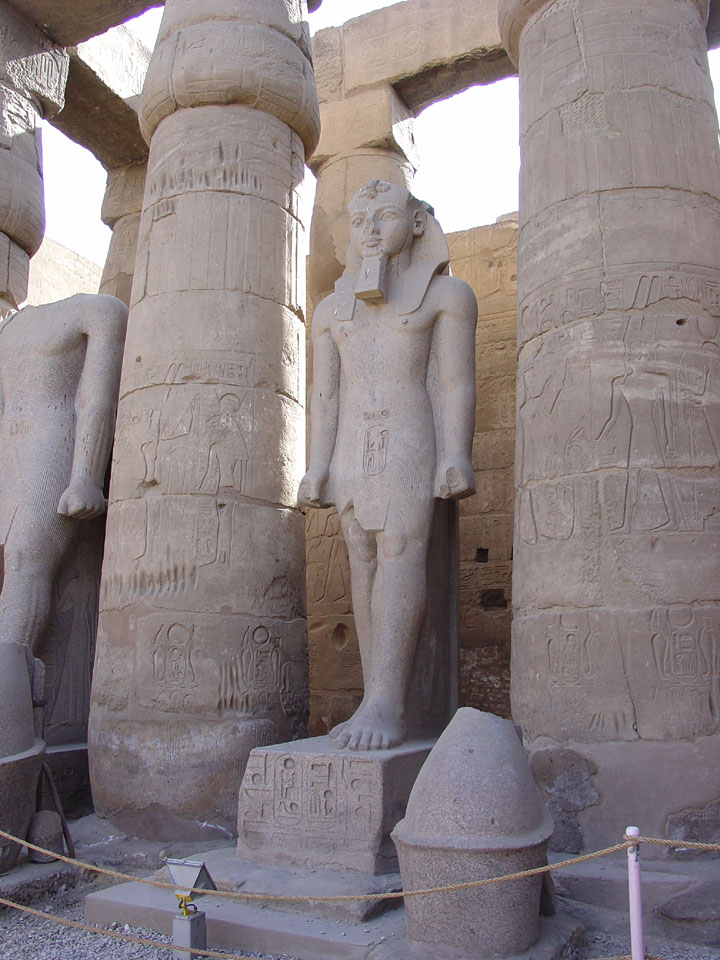
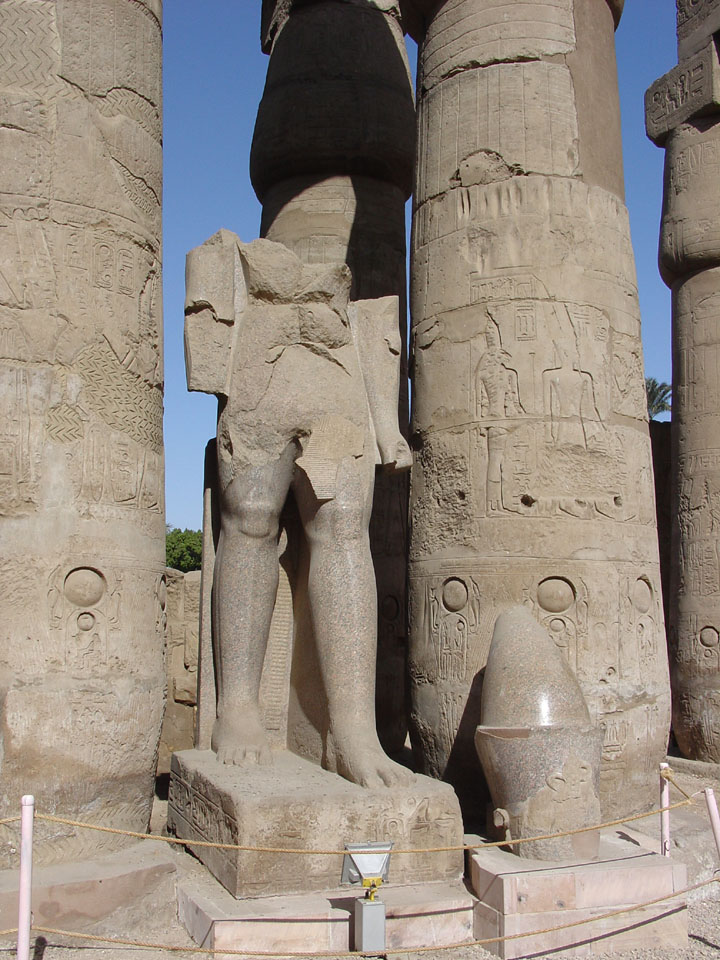
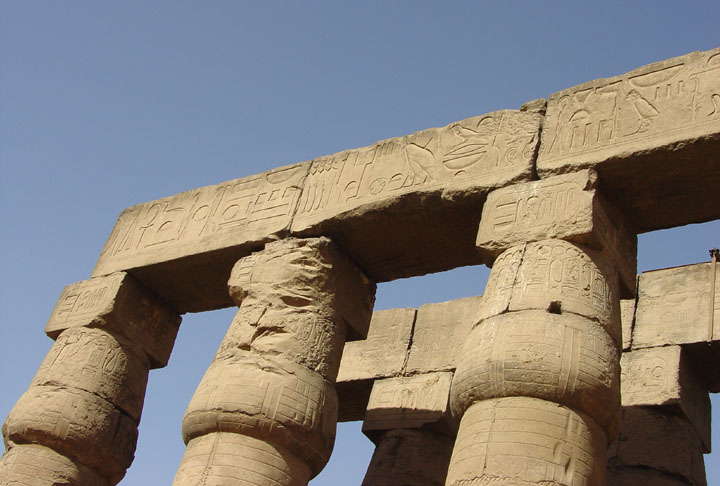
Beyond the court lies the impressive Colonnade (with the mosque) erected by
Amenhotep III. The inside of the walls on either side of the Colonnade were
carved during the time of Tutankhamen and depict the annual Opet (harem)
festival held during the inundation. Once a year the divine image of Amen with
his consort Mut and their son Khonsu would journey in their sacred barques from
Karnak Temples to the temple at Luxor to celebrate this festival.
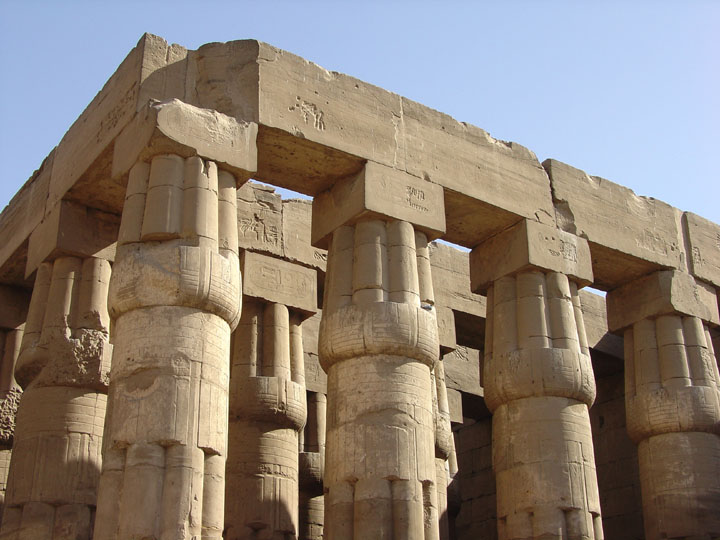
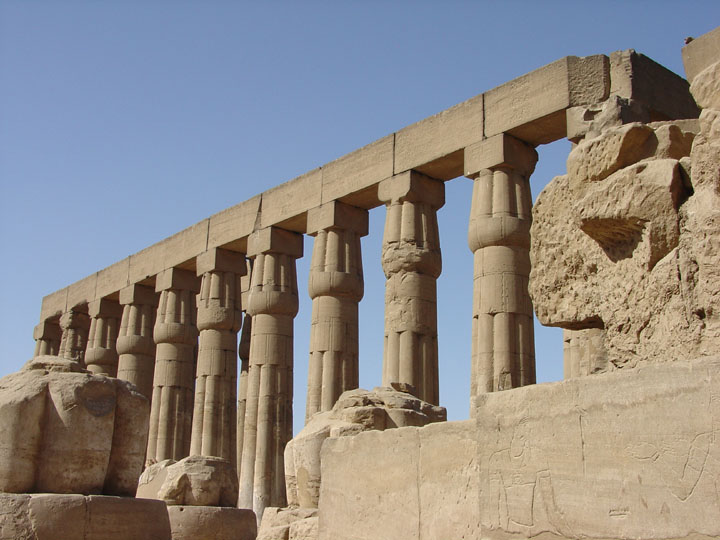
Next is the court ofAmenhotep III surrounded by a double row of columns.

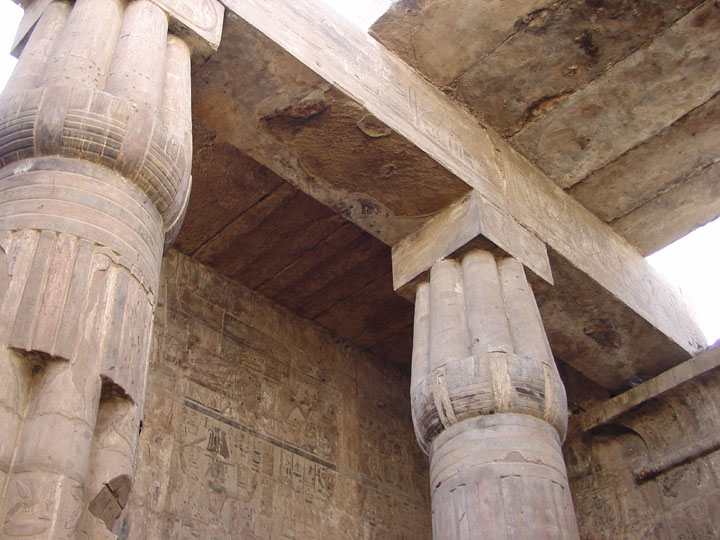
Beyond the court is the Hypostyle Hall containing 32 columns in four rows. At
the rear is an area that was converted into a Roman shrine with Amenhotep IIIís
reliefs plastered over and painted with Christian themes.
At the southern end of the temple complex is the sanctuary which is surrounded
by various chambers including a so-called Birth Room in which the birth of
Amenhotep III is depicted in reliefs.
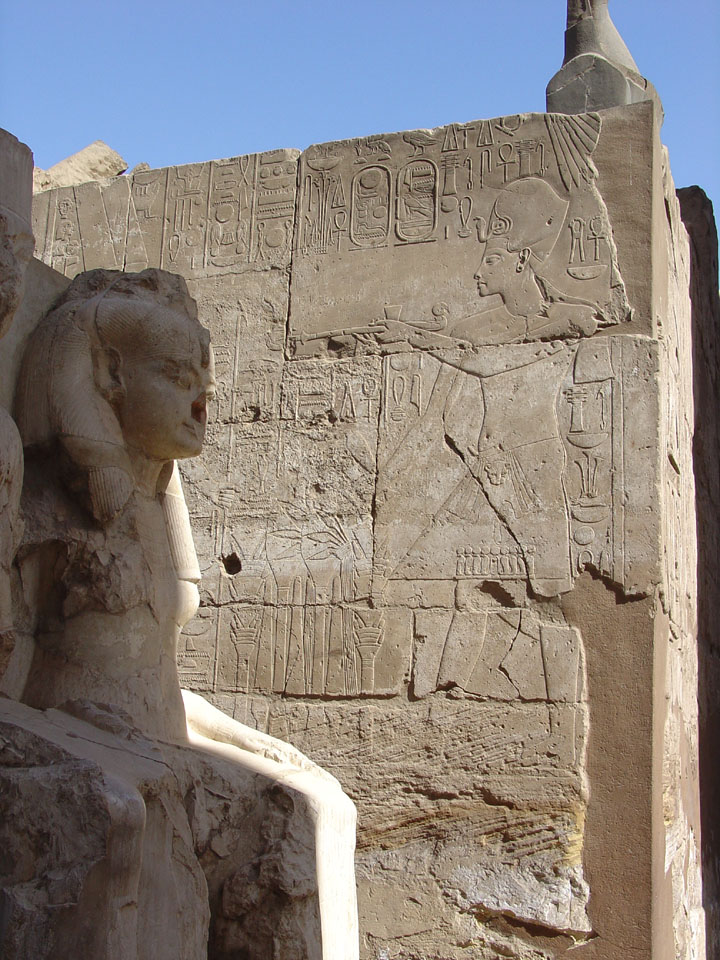

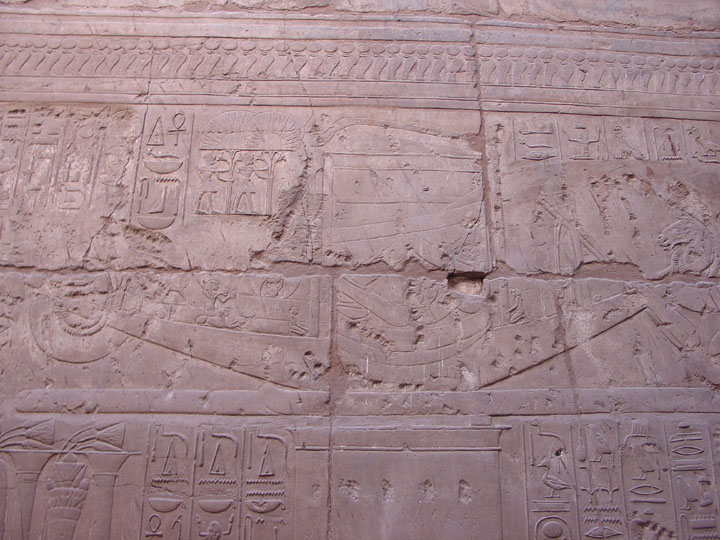
solar barque
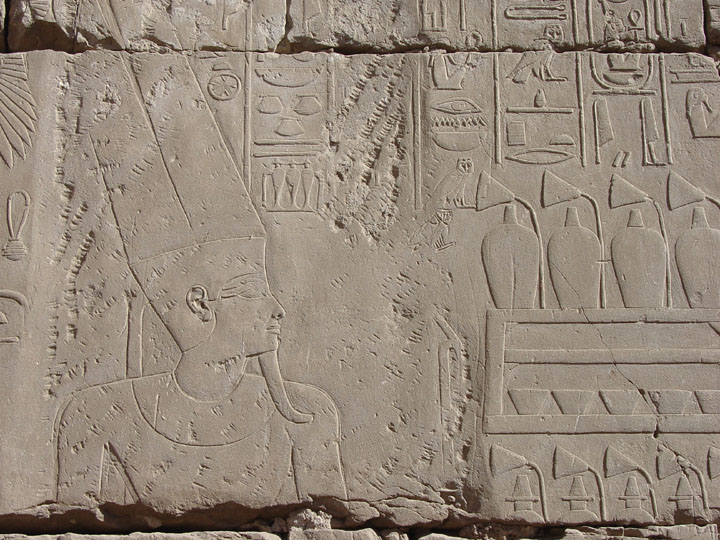
Roman shrine with Amenhotep IIIís
reliefs
plastered over and painted with Christian themes.
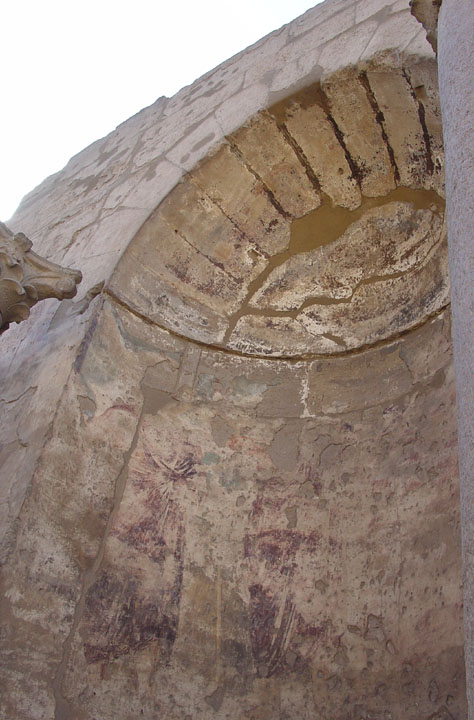
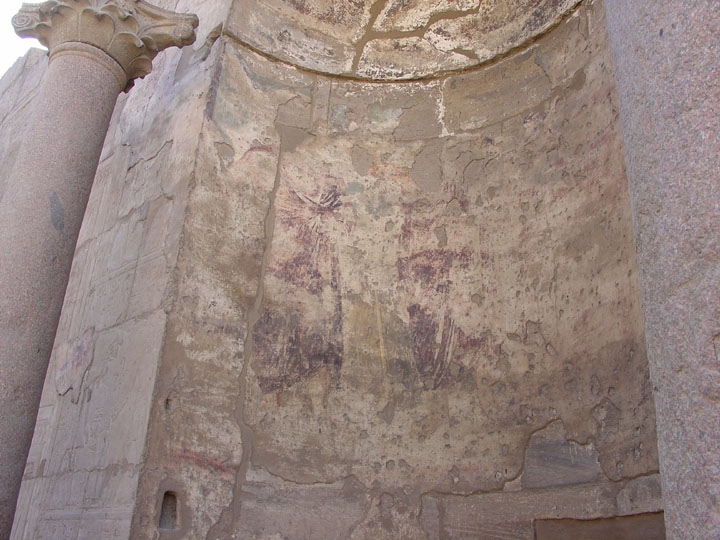
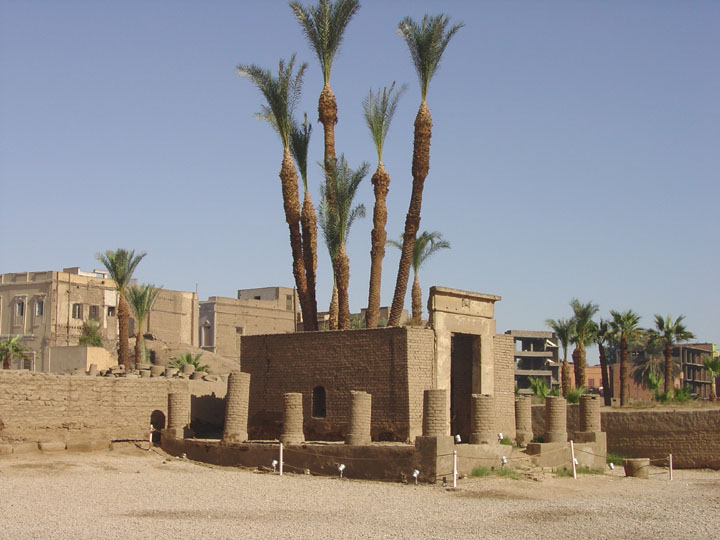
Chapel of Serapis

come again